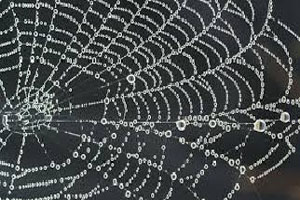
Green substantial method of making synthetic spider silk developed
YarnsandFibers News Bureau 2017-07-11 17:00:00 – EnglandA team of architects and chemists from the University of Cambridge has come up with a new method of making synthetic spider silk which does not require high energy procedure or extensive use of harmful solvents but it could substantially improve methods of making synthetic fibres of all kinds.
They have designed super-stretchy and strong fibres which are almost entirely composed of water, and could be used to make textiles, sensors and other materials. The fibres, which resemble miniature bungee cords as they can absorb large amounts of energy, are sustainable, non-toxic and can be made at room temperature.
Dr Darshil Shah from Cambridge's Department of Architecture said that spider silk is one of nature's strongest materials, and scientists have been attempting to mimic its properties for a range of applications, with varying degrees of success. They have yet to fully recreate the elegance with which spiders spin silk,
The fibres designed by the Cambridge team are "spun" from a soupy material called a hydrogel, which is 98% water. The remaining 2% of the hydrogel is made of silica and cellulose, both naturally available materials, held together in a network by barrel-shaped molecular "handcuffs" known as cucurbiturils. The chemical interactions between the different components enable long fibres to be pulled from the gel.
The fibres are pulled from the hydrogel, forming long, extremely thin threads - a few millionths of a metre in diameter. After roughly 30 seconds, the water evaporates, leaving a fibre which is both strong and stretchy.
Although their fibres are not as strong as the strongest spider silks, they can support stresses in the range of 100 to 150 megapascals, which is similar to other synthetic and natural silks, said Shah. However, their fibres are non-toxic and far less energy-intensive to make.
The fibres are capable of self-assembly at room temperature, and are held together by supramolecular host-guest chemistry, which relies on forces other than covalent bonds, where atoms share electrons.
In these fibres, a range of different forces holding them together at different scales can be seen, said Yuchao Wu, a PhD student in Cambridge's Department of Chemistry.
The strength of the fibres exceeds that of other synthetic fibres, such as cellulose-based viscose and artificial silks, as well as natural fibres such as human or animal hair.
In addition to its strength, the fibres also show very high damping capacity, meaning that they can absorb large amounts of energy, similar to a bungee cord. There are very few synthetic fibres which have this capacity, but high damping is one of the special characteristics of spider silk. The researchers found that the damping capacity in some cases even exceeded that of natural silks.
This method of making fibres could be a sustainable alternative to current manufacturing methods.
Market Intelligence
Ask for free sample Report

experience
Customer Base
dedicated team
Countries Served Worldwide









